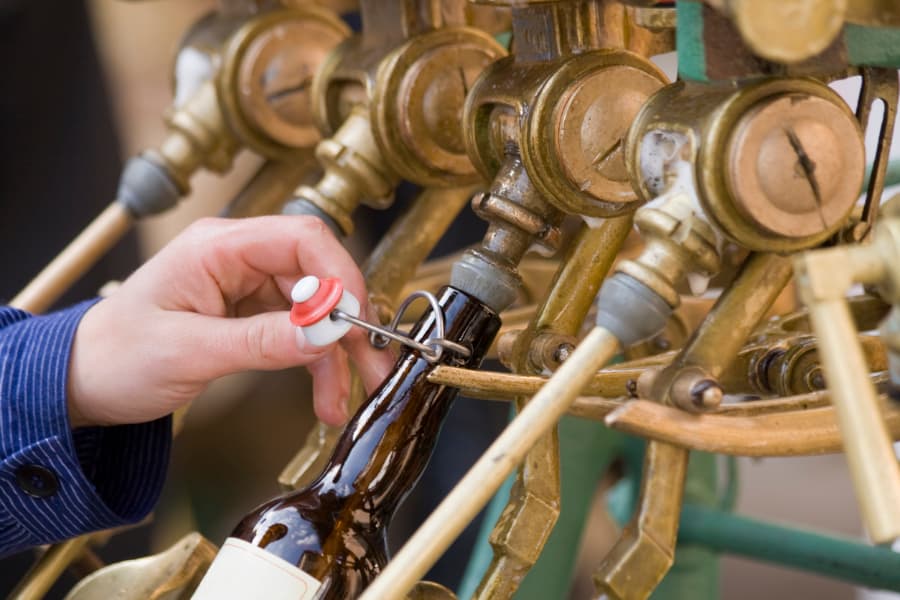
As a new decade starts, it’s fun to look back and see how things have changed over the past 100 years. The decade started with one of the most notorious policy failures in the country’s history: Prohibition. This historic legislation banning the production and sale of alcohol sparked innovative brewing techniques as people tried to skirt the rules. See how some of those historic brewing techniques compare to the methods of today with help from Columbia Distributing.
Historic Brewing Techniques During Prohibition
While Prohibition did little to reduce the consumption of alcohol, it did have a large impact on breweries. Of the over 1,300 brewers in operation in 1915, less than 100 survived until Prohibition was repealed in 1933. Instead, production shifted to people in their homes as they began brewing beer themselves. While it was forbidden to sell beer, it was fine to sell the ingredients that beer was made from, allowing businesses to not-so-subtly offer the option of home-brewing to their customers. Syrups containing highly concentrated malt and hops were sold with a wink and a nod at grocery stores.
Meanwhile, brewers tried to keep up by selling drinks that tasted like beer but were under the legal limit of 0.5% alcohol. Brewers followed their normal brewing process but had to burn off the excess alcohol to stay under this threshold. Called “near beer,” this product failed to catch on with the public. Instead, many brewers had to pivot towards selling malt syrup concentrate for home brewing or entering new markets altogether.
Brewing Techniques Today
Today, the brewing industry is indistinguishable to what it was 100 years ago. Automation has taken over a lot of the process, allowing for mass production and experimentation with different ingredients and methods. For example, during the milling process, the fineness of the grain can be adjusted remotely from a computer. Brewing a base malt may require a coarser grind, while a specialty grain will usually necessitate a fine grind. The same customizability applies to mashing. Precise temperatures can be achieved inside the filter and adjusted for each step to the brewer’s liking, allowing for a higher yield and less waste.
Hops are one of the major ingredients in beer, meaning they get special attention during the brewing process. Fresh hops bring out better flavor, but not all breweries have access to them year-round. To maintain the benefits of fresh hops, advanced methods have been developed to preserve them. For example, lupulin powder keeps hops cryogenically frozen to maintain freshness and also removes the vegetal notes to help lessen the loss of liquid. Creating hop pellets is another popular innovation where leaf hops are milled into a powder and pressed into the pellet shape. The amount of vegetation in these pellets can be controlled so brewers can achieve the exact flavor and level of bitterness they are looking for with their recipe.
Brewing Through the Years
From concentrated syrups of malt and hops to cryogenically-frozen hops and automated milling, brewing techniques have come a long way since the 1920s. These new methods bring several benefits to consumers, as brewers have much more control over the freshness of their ingredients and the flavors they can produce. Check out the large inventory of domestic and craft beer brands supplied by Columbia Distributing for your beverage needs. Contact us to learn more about our brands and our three Pacific Northwest branches.